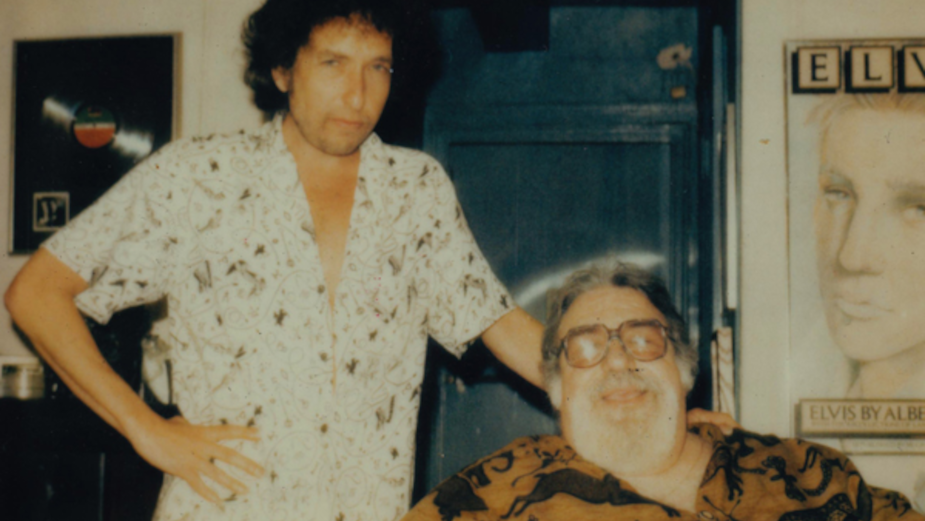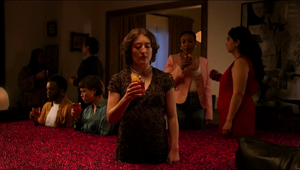
Save the Last Dance for Me

Bob Dylan’s new book, The Philosophy of Modern Song, is dedicated to Doc Pomus. Whilst Doc isn’t alive to see the honour, his name is a fitting place to start a book that examines a post-rock’n’roll musical world, and how the songs of the last century have shaped our lives.
Whether it was with his long-time writing partner Mort Shuman in the 1950s and 60s; working with Dr. John or Willy DeVille in the 70s or writing and recording on his own, Doc Pomus has over a thousand song writing credits to his name and is a pioneer of modern popular music. His songs have been recorded by such artists as Elvis Presley, Ray Charles, Dolly Parton, Andy Williams, Lorraine Ellison, Emmylou Harris and even Michael Buble.
But before he could become a songwriter to the stars, Doc, who was born in Brooklyn in 1925 (by the real name Jerome Felder) suffered a case of polio at the age of six which left him walking on crutches until in mid-life, when he became confined to a wheelchair.
After hearing the Big Joe Turner song Piney Brown Blues on the radio, the young Jerome Felder changed his name to the bluesier-sounding Doc Pomus and set out for a career in music. Sneaking out from his family home, Doc would play in clubs around New York alongside acts such as King Curtis and Milt Jackson as well as recording tracks for labels like Chess and Gotham. Songs like Send for the Doctor are a rollicking ride and capture the energy Doc had as a vocalist as he wails his way through the song, sounding one part Phil Harris, one part hopped-up Randy Newman and a whole lot of fun.
The closest he came to a hit as a performer was the song he wrote and recorded (under the stage name Doc Palmer, whilst being billed as Jerry Pomus on the song writing credit) called Heartlessly; which sees his gruff and tender voice trading lines on a barrel-house stomp against an understated guitar riff, honking sax and bluesy piano. The song was picked up for radio play by pioneering DJ Alan Freed, having been released through the Dawn label in 1955.
Around this time, Doc began writing songs himself (as well as articles for music magazines in the city). 1956 saw his first real success with song writing when Ray Charles recorded his staggering and swaggering Lonely Avenue and Big Joe Turner, the singer who had originally inspired Doc to take up a life in music, released his Boogie Woogie Country Girl.
Despite these successes, it wasn’t until the royalty check came in for his songwriter credit on The Coasters’ Young Blood the following year that Doc was convinced that song writing was his calling.
After meeting and teaming up with fellow Brooklyn-born songwriter and pianist Mort Shuman, the duo went on to write a series of hits and classics including This Magic Moment, Sweets for my Sweet, Hushabye, Go, Jimmy, Go and Can't Get Used to Losing You. One song they worked on for a while started life as It’s Great to be Young and in Love. After working on the song a while, the two writers paired the melody with a new set of lyrics and the world was introduced to Why Must I Be a Teenager in Love. The song was first recorded in 1959 by Dion and the Belmonts where it rose to No. 5 in the Billboard charts stateside, before becoming a No. 2 UK hit for Marty Wilde and his backing band The Wildcats.
At the introduction of rock'n'roll lyricist Otis Blackwell (Fever, Don't Be Cruel, Return to Sender, Great Balls of Fire), Doc and Shuman began work in the legendary Brill Building for the Hill & Range publishers (now part of the Warner Chappell family), whose biggest-hitting artist was none other than Elvis Presley. As well as writing songs for The Drifters, Ben E King and The Coasters, the song writing duo also put together several tracks for the King of Rock and Roll himself, including classics such as A Mess of Blues, Surrender, Kiss Me Quick and Viva Las Vegas (hitting No. 1 in the charts with Surrender in 1961).
Their most famous, enduring and poignant composition, though, was another one that rose all the way to the top of the charts. Save the Last Dance for me combines a gorgeous Mort Schuman melody with a gut-wrenching and heart-breaking Doc Pomus lyric.
Inspired by the events of his 1957 wedding day to actress Willi Burke, the song (although not explicitly), tells the story of how Doc watched his new wife dancing at their reception with friends, family and guests while he was confined to his wheelchair and unable to join in; waiting for her to carry on and have her fun whilst the night was young and asking only that she saved the last dance that day, for him.
First released in 1960 by The Drifters, the song rose to No. 1 in the charts and since has, of course, taken on a life of its own. Somewhat ironically, it has become a popular first dance song at weddings; been covered over three hundred times by other artists, and appeared in sync placements in film and TV, including The Big Wedding, starring Robert DeNiro and Dianne Keaton.
Starting on August 14th, 2012, in Ghent, Belgium, Leonard Cohen began closing his live shows with a delightful rendition of Save the Last Dance for Me (in a nicely symmetrical move having begun his concerts with his own fleet-footed tune, Dance Me to the End of Love), a practice he continued up until his final show on December 21st, 2013, in Auckland, New Zealand, meaning the song was the last one he sang on stage and closed up the book on a legendary performing career.~
Following Doc’s untimely death at age 65 in 1991, he was posthumously inducted into both the Rock and Roll Hall of Fame as well as the Songwriter’s Hall of Fame. In 1995, Rhino Records set about putting together a tribute album to the great songwriter. Having worked with Atlantic Records and Warner Chappell via Hill & Range, it was fitting that another part of the Warner Music Group put so much attention and care into Till the Night is Gone, and it is a testament to the songwriter and his impact that artists as diverse and talented as Lou Reed, The Band, B. B. King, Irma Thomas, Rosanne Cash, Solomon Burke, Brian Wilson, Dion and Aaron Neville recorded for the record, as well as Bob Dylan, who is once again paying tribute and getting people talking about his good friend nearly 30 years later.















